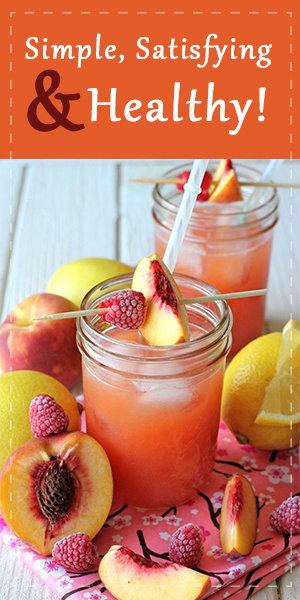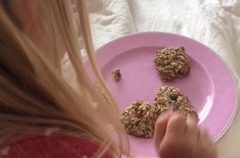We’re going Raw
As we near February 19th and Annabelles first birthday, I’ve started worrying about milk. Not about breast milk this time, but about milk milk. I’ve never been a milk drinker and since going to the Institute for Integrative Nutrition and becoming a Health Counselor I’ve learned a lot of reasons to not want to drink the milk sold in stores. If you’re a milk drinker in my home, chances are you’ve grown tired of hearing me talk about blood and puss in milk (I tend to restrain myself on all milk talk with those not related to me, it tends to push too many buttons). I’m sure all you moms who have pumped can relate to the thought of being milked a few times a day with an industrial strength machine, I’m sure we’d leak a little blood and puss into our milk supply too. Lets not forget that cows are supposed to eat grass and live on a pasture, not be confined, get no exercise, eat corn and soybeans while being pumped full of growth hormones and antibiotics. Yummy.
I’m not trying to make you feel bad about drinking milk, I’m just sharing the facts that I’ve encountered. Like I said I felt compelled to do research because I knew I wouldn’t be giving Annabelle pasteurized or homogenized milk and I had to figure out what to do instead. So I’m just sharing my findings, do with them what you like.
This is out of Nina Planks book Real Food, she cites all of her sources in her book and there are many of them. (In parenthesis are my comments not Ninas).
Pasteurization destroys folic acid and vitamins A, B6 and C.
Pasteurization inactivates the enzymes required to absorb the nutrients in milk (which is why so many people are lactose intolerant and also why the countries with the highest rates of milk drinkers also have the highest rates of osteoporosis – we’ve killed the enzyme in the milk that we need to absorb the calcium).
Pasteurization creates oxidized cholesterol, alters milk proteins and damages omega-3 fats (so milk isn’t really milk anymore after all those changes, it’s more like a science experiment).
Here are some of the benefits of Raw Milk and Cream (also from Nina Planks books):
Raw milk contains heat sensitive folic acid and vitamins A, B6, and C.
Contains lactase to digest lactose, lipase to digest milk fats, phosphate to absorb calcium.
Raw milk has beneficial bacteria including lactic acids, which live in the intestines, aid digestion, boost immunity, and eliminate dangerous bacteria.
Raw cream contains a cortisonelike agent which combats arthritis, arteriosclerosis, and cataracts.
Raw butter contains myristoleic acid which fights pancreatic cancer and arthritis.
There’s so much research on the health benefits of raw milk versus pasteurized milk that I could write a book on it, in fact lots of people have written books about it. If you want more information the best place to start would be the Weston Price Foundation. Raw milk for sale is inspected, in Texas it’s inspected every 2 weeks which is probably more than the milk getting sent to stores gets inspected. It’s not just a farmer scratching an itch and then milking a cow, it’s clean. and it’s delicious. and it doesn’t give me horrible stomach aches like regular milk does. and the cows walk around a farm eating grass and are not pumped full of growth hormone and antibiotics and they’re not milked several times a day.
Some states don’t allow the sale of raw milk at all, some states such as California and a few others sell it in grocery stores and other States, such as Texas, allow raw milk only to be sold on a farm. To get more info about which states allow what and where you can find raw milk in your state go to the Raw Milk site.
If you’re in the Fort Worth area I recommend Nors Dairy in Abbot, TX they have some co-ops you can get information if you’re interested, they might even have a Dallas co-op but I’m not positive.
There you have it, my 2 cents on milk. Annabelle and I will be drinking raw milk and cream, eating raw butter, cheese and yogurt and eating animals that have roamed free and eaten grass. You may do what you like and I promise I will not judge, just don’t judge me either.
Having said all that I recognize that raw milk isn’t always easy to find and it is more expensive. I won’t always have access to raw milk and although not drinking milk doesn’t bother me I know Annabelle will need to drink milk for a while. So what kind of milk should you buy if you can’t get your hands on traditional raw milk?
Organic milk is second best since to be labeled organic they have to have some access to pasture which is better than no access at all. Milk from grass fed cows is the best, even if it’s not organic. So if you can’t go raw and you can find grass fed milk buy it, otherwise buy organic.
This post is part of Real Food Wednesdays










